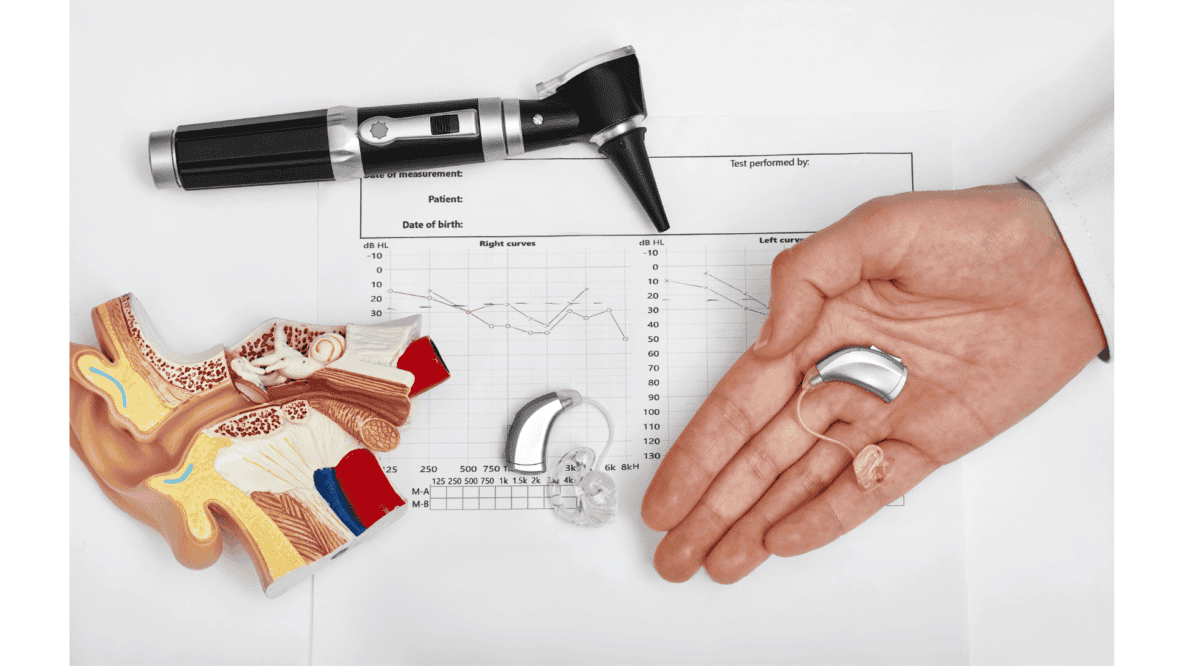Understanding your hearing test results is an important step toward effective hearing loss management. Hearing tests provide valuable insights into your hearing health, revealing the extent and nature of any hearing impairment. This knowledge empowers you to make informed decisions about the next steps, whether you need a hearing aid, further medical evaluation, or lifestyle adjustments. Let’s discuss your hearing test results, shall we?
Understanding the Audiogram
An audiogram is the most common way to present hearing test results. It’s a graph that shows the faintest sounds a person can hear at different pitches or frequencies. The horizontal axis represents the frequency of sounds, measured in Hertz (Hz), ranging from low to high pitches. The vertical axis indicates the intensity or loudness measured in decibels (dB).
In an audiogram, hearing thresholds are plotted as points. These points create a line to illustrate the softest sounds heard at each frequency. Hearing within the 0-25 dB range across all frequencies typically indicates normal hearing. Anything above 25 dB suggests varying degrees of hearing loss.
Degrees of Hearing Loss
Hearing loss is generally categorized into degrees that describe its severity. Mild hearing loss features hearing thresholds between 26 and 40 dB, making it difficult to hear soft speech or follow conversations in noisy environments. Moderate hearing loss, with thresholds between 41-55 dB, creates challenges in following conversations, especially in groups or with background noise.
Moderately severe hearing loss, ranging from 56 to 70 dB, makes regular speech hard to hear, often requiring higher volume levels. Severe hearing loss, with thresholds between 71-90 dB, means conversations need to be very loud and nearby to be audible. Finally, profound hearing loss involves thresholds above 90 dB, where sounds must be extremely loud and communication relies heavily on visual cues.
Types of Hearing Loss
Diagnosing the type of hearing loss is critical for determining the appropriate intervention. Conductive hearing loss, caused by problems in the outer or middle ear, such as ear infections or earwax buildup, can often be treated medically or surgically. Sensorineural hearing loss results from damage to the inner ear or auditory nerve is usually permanent, and is managed with hearing aids or cochlear implants. Mixed hearing loss is a combination of conductive and sensorineural components, necessitating treatments that address both outer/middle ear issues and inner ear damage.
What Steps to Take Next
After receiving your hearing test results, several steps can be taken to address your hearing health. It is important to consult with your hearing health professional to discuss the results and understand the type and severity of your hearing loss. This conversation helps determine the most suitable management plan. For many, hearing aids are a valuable tool. They come in various styles and technologies tailored to specific hearing loss profiles. A hearing health professional can recommend the best options.
Many assistive listening devices, such as amplified telephones or personal FM systems, can enhance communication in specific situations, boosting overall quality of life. Adopting healthy hearing habits is another beneficial step. Protect your hearing by reducing exposure to loud noises and using ear protection when necessary. Regular hearing checkups can monitor changes and catch issues early.
Joining a support group offers emotional and practical guidance, providing shared experiences and coping strategies. Connecting with others facing similar challenges promotes a sense of community.
Conclusion
Understanding and interpreting hearing test results are pivotal in managing hearing health effectively. By recognizing the degree and type of hearing loss, individuals can take informed steps toward improving their hearing and quality of life. Combining professional advice with proactive lifestyle changes ensures robust support on the journey to better hearing.


